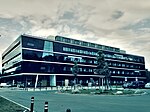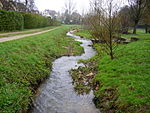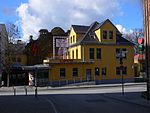Aurach (Regnitz, Mittelfranken)

There exists also another river named Aurach that is a tributary of the Regnitz, see Aurach (Regnitz, Oberfranken). For other uses, see Aurach (disambiguation).Aurach (German pronunciation: [ˈaʊ̯ʁax] (listen); also: Mittlere Aurach) is a river of Bavaria, Germany. It is a tributary of the river Regnitz. The river Aurach begins in the Franconian Heights to the west of the village Klausaurach in the municipality of Markt Erlbach. It runs through Aurachtal, the town of Herzogenaurach, and the Erlangen district of Frauenaurach. After crossing under the Main-Danube Canal, it joins the river Regnitz at the Erlangen district of Erlangen-Bruck. A recreational cycle path runs alongside the river Aurach from Herzogenaurach to Erlangen.
Excerpt from the Wikipedia article Aurach (Regnitz, Mittelfranken) (License: CC BY-SA 3.0, Authors, Images).Aurach (Regnitz, Mittelfranken)
Fürther Straße, Erlangen Bruck
Geographical coordinates (GPS) Address Nearby Places Show on map
Geographical coordinates (GPS)
| Latitude | Longitude |
|---|---|
| N 49.5712 ° | E 10.9834 ° |
Address
Brucker Wasserrad
Fürther Straße
91058 Erlangen, Bruck
Bavaria, Germany
Open on Google Maps









